“You think you know, but you have no idea.” That iconic line might’ve belonged to MTV’s Diary, but it perfectly sums up what happens behind the scenes of your favorite TV shows. Ever wondered what The Big Bang Theory would’ve been like without Penny? Or how Game of Thrones could’ve gone up in smoke before Daenerys ever uttered “Dracarys”?
Pilots are the very first episodes meant to sell a show, and they’re TV’s ultimate test runs. They’re rewritten, recast, and sometimes outright scrapped before a network gives the green light. Some of the biggest hits on television started out wildly different—with unfamiliar faces, awkward tone shifts, and even completely different titles.
So buckle up, TV lovers, as we're diving deep into the world of lost pilots, weird casting choices, and the risky rewrites that saved your favorite shows from fading into obscurity. Here’s a countdown of 10 TV shows that had to crash and burn—just a little—before rising to prime time glory.
Game of Thrones
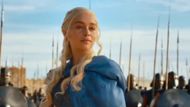
Before Game of Thrones took over the world with dragons, betrayals, and a throne that no one could sit on comfortably, it was almost definitely headed for an icy end. The original 2009 pilot, directed by Tom McCarthy, didn't quite hit the mark. In fact, not only did HBO reshoot it, but they went so far as to recast and rewrite major parts of the episode. The showrunners, David Benioff and D.B. Weiss, later admitted it in interviews with amusing bluntness. “We got everything wrong,” Weiss once confessed to Vanity Fair. “Everything from costume to plot to casting. We even had to explain what incest was to people.”
The difference in tone between the two pilot episodes is night and day. The original pilot included an odd, disjointed structure and distorted character motivations. Cersei and Jaime Lannister’s incestuous relationship wasn’t clearly explained, leaving the audience who saw this initial pilot scene confused about the plot dynamics.
The second version, shot in 2011, finally got the tone right. The showrunners decided to make massive changes from the initial attempt and even recast two major roles for the final cut. Jennifer Ehle as Catelyn Stark was replaced by Michelle Fairley, while for the crucial role of Daenerys Targaryen, Tamzin Merchant was replaced in the reshoot by Emilia Clarke, who brought a steely determination under the silver-blonde hair, exuding power from her very first on-screen appearance.
The first attempt, though more true to the source material, was not received positively. And hence, the rewrites were so necessary in the remake, which was colder, more brutal, less glossy, and worked so well, leading to its now very dedicated fanbase.
Sherlock
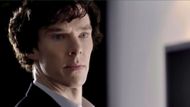
“I’m not a psychopath, Anderson. I’m a high-functioning sociopath. Do your research.”
This line by the iconic sleuthing sensation became a defining dialogue for the character of Sherlock Holmes over the course of the show. Therefore, it was all the more astonishing when this line was not even a part of the initial attempt.
Before Sherlock became the hyper-stylized, whip-smart detective show we all came to love, it began its journey as a much more traditional 60-minute pilot shot in 2009. Benedict Cumberbatch still played Sherlock Holmes, Martin Freeman was still John Watson, and yet, it lacked the modern charm and cinematic confidence of the final hit show.
The original pilot was a slow-paced version of what would later become the iconic pilot episode, “A Study in Pink.” No swirling text messages on screen, no quick zooms or montages of deductions dancing across the frame. It was, in one word, lackluster.
“Steven and I knew we had something, but the original version just wasn’t it,” said Mark Gatiss, co-creator and actor for Mycroft Holmes, in a Radio Times interview. In a rare and miraculous turn of events, the BBC decided on a total reshoot, dividing the show into three 90-minute feature-length episodes.
The new pilot gave us Sherlock’s coat-swirling drama, quick-paced visuals, and a gripping narrative that made our hearts pound.
The Big Bang Theory
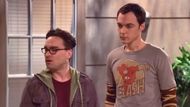
The Big Bang Theory pilot that aired in 2007 introduced us to Sheldon and the rest of the science gang, giving us over a decade of sitcom gold. However, the original, unaired pilot was another equation altogether. For starters, the main leads—Penny, Raj, and Howard—didn’t exist in the original attempt. Instead, there were two different female leads, Katie and Gilda, who were written out completely in the final retake. Katie was supposed to be a precursor to Penny, but unlike the bubbly and aspiring character we came to love, Katie was nothing like her. Tough and sexually confident, Katie, to put it bluntly, was mean. She insulted Leonard and Sheldon constantly, and her interactions lacked the light-hearted warmth Kaley Cuoco would later bring to Penny.
“I didn’t like the original girl,” admitted test audience members in CBS’s internal notes. “She was too harsh.” The showrunners, Chuck Lorre and Bill Prady, listened, rewriting her character out entirely. Sheldon, played by Jim Parsons, was also very different from the robotically brilliant oddball we grew to adore. Initially written to be more sexual and emotionally engaging, it took some recalibration and a lot of “Bazinga!” to make Sheldon the legend he became. As Parsons explained on The Late Show, “The Sheldon in the unaired pilot? He had slept with someone. That’s not my Sheldon.” The rewrite was definitely the right move for the show—otherwise, we might’ve ended up with more cringe than comedy from one of TV’s most beloved nerd squads.
Gilmore Girls
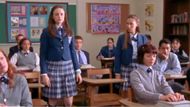
It’s hard to imagine anyone but Lauren Graham as the fast-talking, coffee-addicted Lorelai Gilmore. But during the early stages of Gilmore Girls, the casting wasn’t so clear-cut. In the unaired pilot presentation (a sort of pre-pilot demo for the network), the role of Lorelai was offered to another actress. Graham wasn’t available at first due to another commitment. And while Alexis Bledel was always Rory (even though she was incredibly new and green), Lorelai was a revolving door. However, as creator Amy Sherman-Palladino recalled, “We needed someone who could speak at 500 words per minute and still make you cry on cue.” So when Graham finally freed up and auditioned, the plot clicked instantly.
Their mother-daughter banter became the lifeblood of the show, with that iconic pilot episode breakfast scene showcasing their phenomenal chemistry:
Lorelai: “You need coffee.”
Rory: “I need lip gloss and an outfit that doesn’t make me look like a bookmobile.”
The original version was more teen soap than witty drama and had a lot of subtle differences. The town of Stars Hollow wasn’t quite as quirky, with fewer eccentric townspeople and less Sookie charm, as Melissa McCarthy wasn’t the original choice either—Alex Borstein played Sookie in the unaired pilot. Even Rory's first love interest on the show, Dean Forester, was played by Nathan Wetherington, which didn't feel quite right and was later replaced by Jared Padalecki in the second retake. Once the final version aired in 2000, however, the show became an instant cult classic. Thank the casting gods for their eventual wisdom and intervention.
Buffy the Vampire Slayer
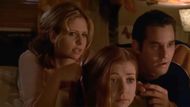
Before Sarah Michelle Gellar became the Chosen One, before Sunnydale High became Hellmouth Central, there was a 1996 Buffy the Vampire Slayer pilot that lived—and thankfully, died—in the shadows. This pilot was rough. The special effects were laughable—think vampire masks from a Halloween clearance sale—the tone was inconsistent, and, most notably, the original sweater-loving queer icon, Willow, was not played by Alyson Hannigan but by actress Riff Regan, whose portrayal didn't hold a candle to the Willow we came to know and love.
“The pilot didn’t have that spark,” said Joss Whedon, Buffy’s creator. He was frustrated but determined to make his vision come to light. Hannigan's Willow brought vulnerability and sass in equal parts to the show, while Nicholas Brendon’s Xander and Anthony Stewart Head’s Giles added the perfect mix of charm and gravitas. Sarah Michelle Gellar, who originally auditioned for Cordelia, was switched to play Buffy by Whedon—a decision that redefined TV history. The aired pilot in 1997 wasn’t perfect, but it laid the groundwork for a show that would change the genre of supernatural TV.
Avatar: The Last Airbender
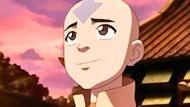
Before Aang soared on Appa’s back and whispered “Yip yip!” into our hearts, Avatar: The Last Airbender was a very different beast. It was less “spiritual epic” and more “cartoon chaos.” The very first pilot episode, created by Michael Dante DiMartino and Bryan Konietzko, titled The Last Airbender, was animated in 2003 to pitch the show to Nickelodeon. This unaired short had cruder animation, a different score, and slightly altered character dynamics. Aang was still the cheerful, staff-spinning airbender, but he had more of a Looney Tunes character vibe, dodging fireballs with slapstick flair rather than monk-like wisdom.
Katara—voiced by Mae Whitman in the final series—was originally named Kya (a name later recycled for her mother) and had a sassier, more aggressive persona. Sokka, played by Jack De Sena, was more of a comic-relief sidekick with exaggerated cluelessness, a far cry from the sarcastic strategist we came to love. The unaired pilot also featured Zuko with a completely different voice actor and a design that leaned more generic anime villain than the tormented prince voiced iconically by Dante Basco.
“We were trying to explain this big, mythological world in ten minutes,” said DiMartino in a behind-the-scenes feature interview. “It was like fitting a gallon into a teacup. But it worked well enough to get the green light.” The creators took the notes and reimagined the tone, leaning into Eastern philosophy, epic worldbuilding, and nuanced characters. And thank the moon spirit they did—because without that glow-up, we might never have had “Leaves from the Vine” or Toph’s legendary sass.
The Office (US)
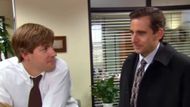
It’s hard to imagine anyone but Steve Carell as Michael Scott, but in the earliest version of The Office, the straight-laced adaptation of the UK original felt more like a carbon copy than a cultural reset. The unaired 2004 pilot was almost a shot-for-shot remake of Ricky Gervais and Stephen Merchant’s The Office (UK), complete with the same cold camera movements and grimmer tone. Carell, still finding his comedic voice, portrayed Michael as more awkward and unlikable—less “World’s Best Boss” and more “World’s Cringiest Mid-Level Manager.”
“I was trying to imitate Gervais, and it just didn’t feel right,” Carell admitted years later on the show Off Camera with Sam Jones. “The tone was too dry for American audiences.” Jenna Fischer (Pam), John Krasinski (Jim), and Rainn Wilson (Dwight) were all present, but their chemistry hadn’t fully fermented. Jim was moodier, Pam stiffer, and Dwight was still strange—but not yet the beet-farming, bear-fearing legend.
After NBC gave cautious approval, showrunner Greg Daniels went back to the drawing board. He softened Michael, leaned into the ensemble comedy, and gave the office more emotional beats. “Once we allowed the characters to be vulnerable,” Fischer said in an Office Ladies podcast episode, “it became something new.” From that shift, we got the Jim-and-Pam slow burn, Michael’s redemption arc, and enough quotables to last a lifetime.
Brooklyn Nine-Nine
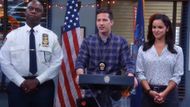
Before it became the laugh-out-loud procedural we know, Brooklyn Nine-Nine was originally pitched as a more traditional police sitcom. But the early pilot wasn't quite the zany, lovable precinct we came to prize. The original concept by Dan Goor and Michael Schur was more about the mechanics of crime-solving than the personalities behind the badges. Andy Samberg’s Jake Peralta was originally a more serious detective with fewer wisecracks and more grit. But the concept was overdone and didn't stand out at all in the ebb and flow of showbiz. “We realized Andy doing serious police work was... kinda weird,” Goor once joked at a PaleyFest panel. “So we let him be Jake.”
The precinct originally featured a detective named Daniels, who appeared alongside Hitchcock and Scully, forming the trio. However, after the pilot, Daniels left the series, leaving Hitchcock and Scully as a duo—and what a duo they made. Another notable alteration from the first draft was Jake Peralta's nickname. In the pilot, Sergeant Terry Jeffords refers to Jake as "JP," a moniker that was dropped in subsequent episodes to streamline character interactions and maintain consistency in dialogue. Terry Crews’ Sergeant Terry Jeffords had a tougher exterior in the early draft, while Stephanie Beatriz’s Rosa was initially closer to Amy—more neurotic and rule-abiding—before they discovered her iconic deadpan rage voice. And Chelsea Peretti’s Gina didn’t even exist in the original pilot. Shocking, isn’t it?
30 Rock

Before Tina Fey brought us the neurotic, sandwich-loving, night-cheese-eating Liz Lemon, the original 30 Rock pilot had a wildly different cast and concept. In early drafts, Rachel Dratch was set to play the lead role of Jenna Maroney, the self-obsessed actress. The pilot was filmed that way, with Dratch doing multiple characters in sketch-like bits. But NBC executives weren’t sold.
So when Jane Krakowski came into the show, she brought with her acting chops, a Broadway flair, and a narcissistic sparkle to Jenna that turned her into the character we quote endlessly. The line, "If you’re gonna do something wrong, do it right," became the iconic slogan of this beloved character. Without these changes, 30 Rock might have remained a sketch show-within-a-show. Instead, it became a meta masterpiece.
Family Guy
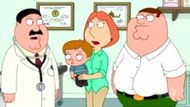
Family Guy’s original pilot featured several major differences in design and casting before its official TV premiere. One of the most noticeable visual changes was Lois Griffin’s appearance—she originally had blonde hair instead of her now-iconic red. Her character design, along with others, was more simplified and rough in the pilot, reflecting the lower-budget animation used to pitch the show. Peter Griffin’s look was bulkier and cruder, and Stewie’s head was more oval than the sharp football shape he later adopted.
Voice casting also saw changes. Meg Griffin was originally voiced by Rachael MacFarlane, Seth MacFarlane’s sister, in the pilot. She was then voiced by Lacey Chabert for the first season before Mila Kunis permanently took over in season two. The animation itself was more limited, with fewer background details and stiffer movement—a far cry from the more polished and expressive animation style of later seasons. These early design and production tweaks were essential in shaping Family Guy into the successful and stylistically distinct series it became after its 1999 debut.
